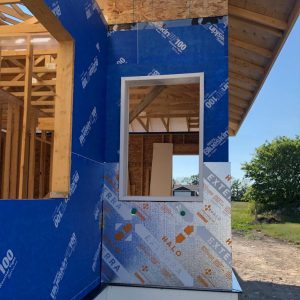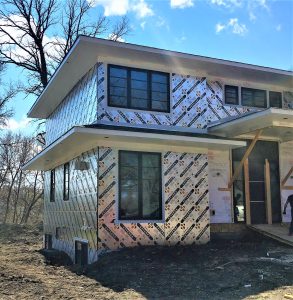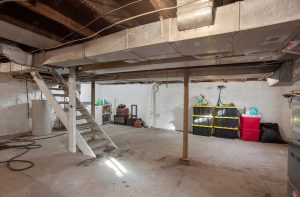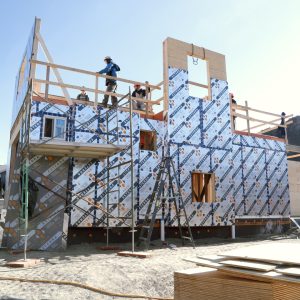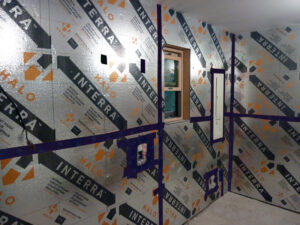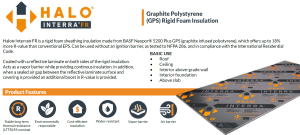Are you thinking about adding a layer of continuous insulation to your foundation wall? Good call — you’ll boost the wall’s R-value and airtightness, and possibly save yourself a few construction steps along the way.
But which side of the concrete should the foam board go? And what’s the best product to use in either application?
Our guide below is here to answer these questions. Below, you’ll learn which product works best for exterior and interior applications, the pros and cons of each approach, and pro tips for streamlining this part of your project.
Foam Board on the Exterior Surface of the Foundation Wall
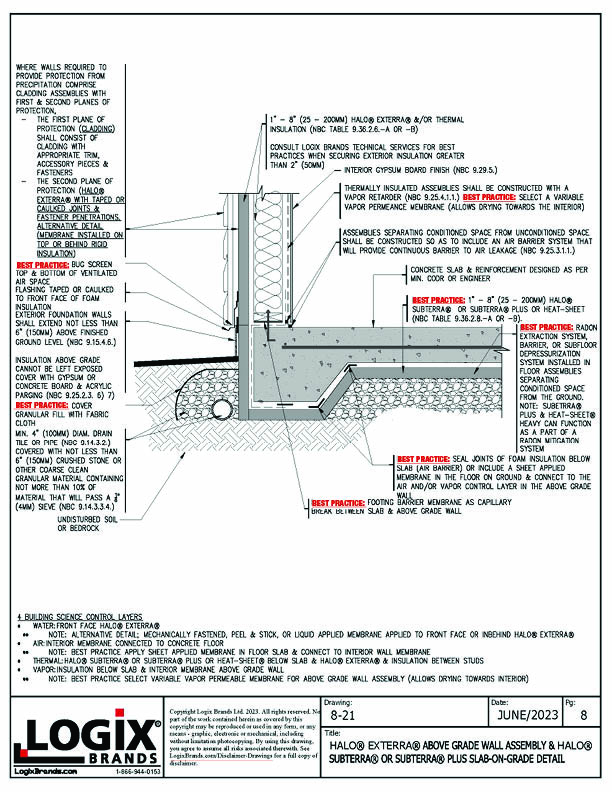
In this configuration, the foam board panel goes flush against the waterproofing membrane covering the exterior surface of the concrete wall. The ideal insulation product for exterior foundation wall applications is Subterra or Subterra Plus. Subterra is Halo’s underslab insulation, but it’s equally suitable for protecting the external face of a foundation wall.
Subterra comprises an energy-efficient and long-lasting Graphite Polystyrene (GPS) foam core, with an R-value of R-5 per nominal inch. The foam is shielded from ground moisture by a thick polypropylene layer, so it functions as both a thermal break and a protective barrier for the waterproofing membrane.
Advantages
Insulating a foundation wall from the outside is always a better idea for the two key reasons below:
- Lower possibility of thermal bridging: Applying a layer of continuous insulation to the outside face of a wall means you avoid penetrating components (such as anchors in the concrete wall) that would serve as a thermal bridge, and you do not leave any concrete exposed above grade. Eliminating the ability for heat to escape reduces the home’s heat loss and improves energy efficiency.
- Reduced condensation: In cold climates, an exterior insulation layer keeps the concrete foundation wall at the same temperature as the warm, moist interior air. This configuration prevents condensation from forming on the interior surface of the concrete.
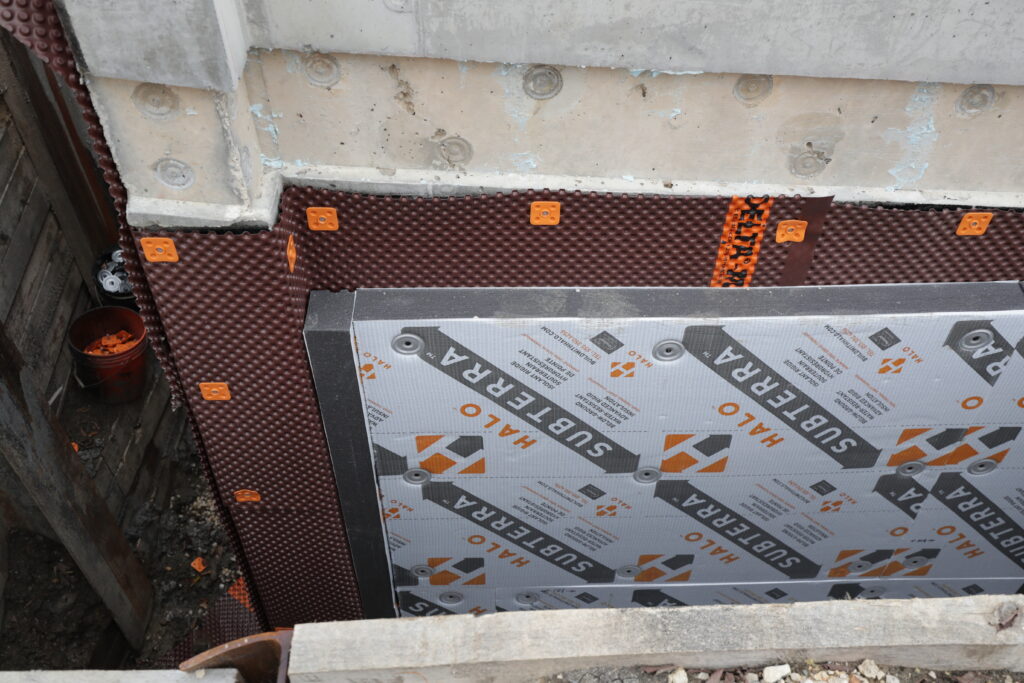
Disadvantages
Despite the pros of installing insulation on the outside face of a foundation wall, there are two disadvantages to this configuration:
- Above-grade portion of the insulation requires protection: The portion of the insulation that protrudes above grade (it must extend at least 6 inches) must be protected from the elements.
- Potential for insect infestation: Insects may be able to find their way in the gaps between the insulation panels if these are not taped and sealed properly. Be sure to tape the joints thoroughly to avoid an insect infestation issue.
Pro Tips
Below a few professional tips to consider if you opt to insulate your foundation walls on the outside:
- Dampproof the foundation walls: It’s a building code requirement to dampproof foundation walls. The dampproofing layer should go onto the face of the concrete before you install the insulation.
- Protect the above-grade portion of the insulation adequately: Use a sheet of gypsum or a concrete board to create a protective layer for the insulation panel protruding above the grade. Then, cover the protective layer with acrylic parging.
- Fasten the Subterra panels properly: Check out our guide to fastening the Subterra panels to the exterior of a foundation wall for detailed instructions.
Foam Board Insulation on the Interior Side of a Foundation Wall
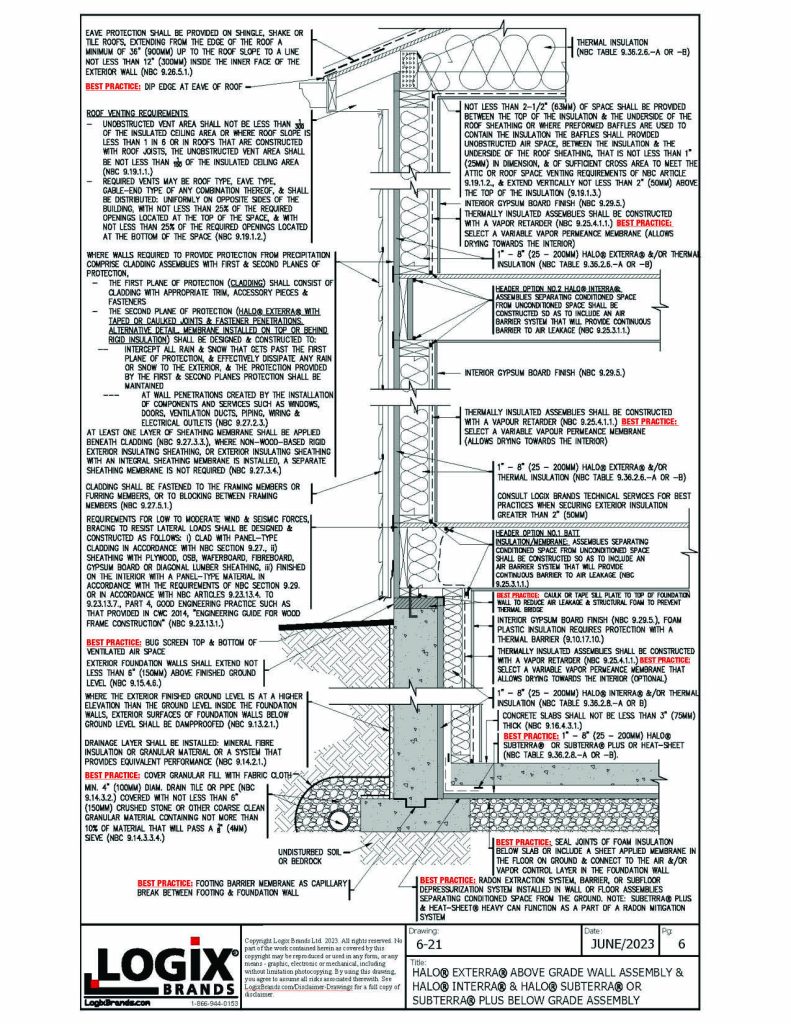
This approach entails having a layer of rigid insulation applied to the inside face of the concrete foundation wall.
The most suitable product for this application is Halo’s Interra or Interra FR. Interra’s GPS foam core provides R-5 of thermal resistance per nominal inch of thickness and comes with an integral vapor barrier. The laminate layer serving as the vapor barrier is reflective, so it can bounce radiant heat back into the home as long as an air gap is provided. Interra FR has similar characteristics but is also designed to serve as a code-compliant ignition barrier (in the US only).
Advantages
Below are the advantages of insulating a foundation wall from the inside with Interra or Interra FR:
- Simplicity: Applying the interior insulation layer is a relatively simple procedure that you can execute at any point once the walls are poured.
- Cost-effectiveness: Insulating from the interior is a more cost-effective approach than installing exterior insulation on a foundation wall.
- Multiple components in one: A continuous layer of Interra provides a thermal, air, and vapor barrier in a single step. You have the option of adding framing members at the interior face of the insulation and filling the stud bays with batt to improve thermal performance further. In the US, you can use Interra FR as an ignition barrier, thus eliminating the need for drywall.

Disadvantages
Here are a few disadvantages of the interior insulation approach:
- Potential thermal bridge: Insulating from the inside leaves a potential thermal bridge. Any anchors or other components penetrating the Interra would enable heat transfer through the concrete wall. At the same time, the above-grade portion of the concrete foundation wall would be left uninsulated, thus facilitating heat loss.
- Condensation potential in cold climates: Having no exterior insulation layer while insulating from the inside means that the concrete wall remains cold. Any warm, moist air that may come in contact with this wall would lead to condensation and harmful moisture buildup on the interior face of the wall.
Additional ignition barrier requirement: Interra FR is a code-compliant ignition barrier in the US, but not in Canada. Using Interra FR to insulate a foundation wall in Canada does not relieve you from the ignition barrier requirement.

Don't miss a thing!
Subscribe for exclusive content, insider industry news and limited edition webcasts.
Pro Tips
Check out our video below for a few handy tips on installing Interra on the foundation wall:
If you’re not happy with the disadvantages of both the exterior and interior options, you can, of course, insulate that foundation wall from both sides. However, at this point, you may as well consider using an ICF foundation instead. ICFs, such as Logix ICF, not only protect the concrete core with two layers of insulation, they also eliminate the need for formwork, reduce the number of steps, and speed up installation.
Wrapping It Up
Adding a layer of continuous insulation to a basement wall greatly increases the wall’s thermal performance and potentially helps eliminate a few construction steps.
Both the external and internal approaches have pros and cons, and we hope that our quick guide will help you make a decision that’s right for your project.
The two illustrations above are taken from the Logix Brands Pathway to Performance (Canada) booklet — a science-based strategy for builders to construct healthy, resilient, and profitable homes.
Download the Logix Brands Pathway to Performance (Canada) booklet

